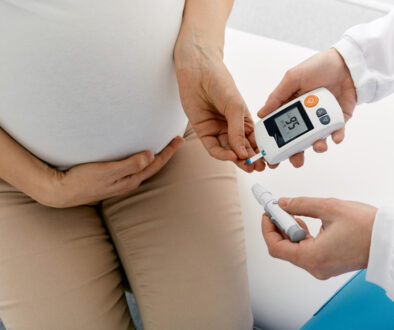My Goal is a Vaginal Delivery! Some important tips:
There are numerous conditions which predispose a patient to a C/section such as an overweight mother, a very large baby, excessive weight gain in pregnancy, induction of labor for medical reasons such as Diabetes, Hypertension (increased blood pressure) and markedly overdue pregnancy.
Fortunately, the majority of patients are good candidates for vaginal deliveries and here are things they can do to maximize their chances for vaginal delivery:
- Keeping weight gain to less than 40 lbs. and ideally between 20-24 lbs. will reduce the chances of a large baby.
- Try to achieve as close to your ideal weight prior to pregnancy as well as good dietary habits.
- Moderate, non-endurance exercise may shorten the labor course.
- When discussing the possibility of electively inducing labor with your doctor, make certain that the cervix is favorable (dilation, effacement (thinning), softened, and most important that the baby’s head is well descended (dropped) into the pelvis.
- Attend doctor appointments religiously to make certain the pregnancy is progressing normally with proper weight gain, baby growth, and screening for Gestational Diabetes.
- Attend a good prenatal class, understand the importance of being in good labor before you are admitted, and review labor expectations with your physician. As a patient gets closer to her due date, she is understandably more uncomfortable and is ready to have her baby. The most significant contribution she can make is to be in good active labor before being admitted and receiving an epidural. Although it is not always achievable, a patient has a much better chance of achieving a vaginal delivery if she is in active labor (which typically is 3-4 centimeters dilated and completely thinned) prior to being admitted and receiving an epidural.
Beckmann, CR (1990). Effects of Structure Exercise on Pregnancy and Labor Outcomes. The Journal of Reproductive Medicine, Jul; 35(7):704-9.
Boschert, Sherry (2012). Early Epidural Doubles C-Section Risk after Induction. Ob.Gyn.News. Retrieved from:https://www.obgynnews.com/index.php?id=11370&type=98&tx_ttnews%5Btt_news%5D=134617&cHash=da03e20e36




